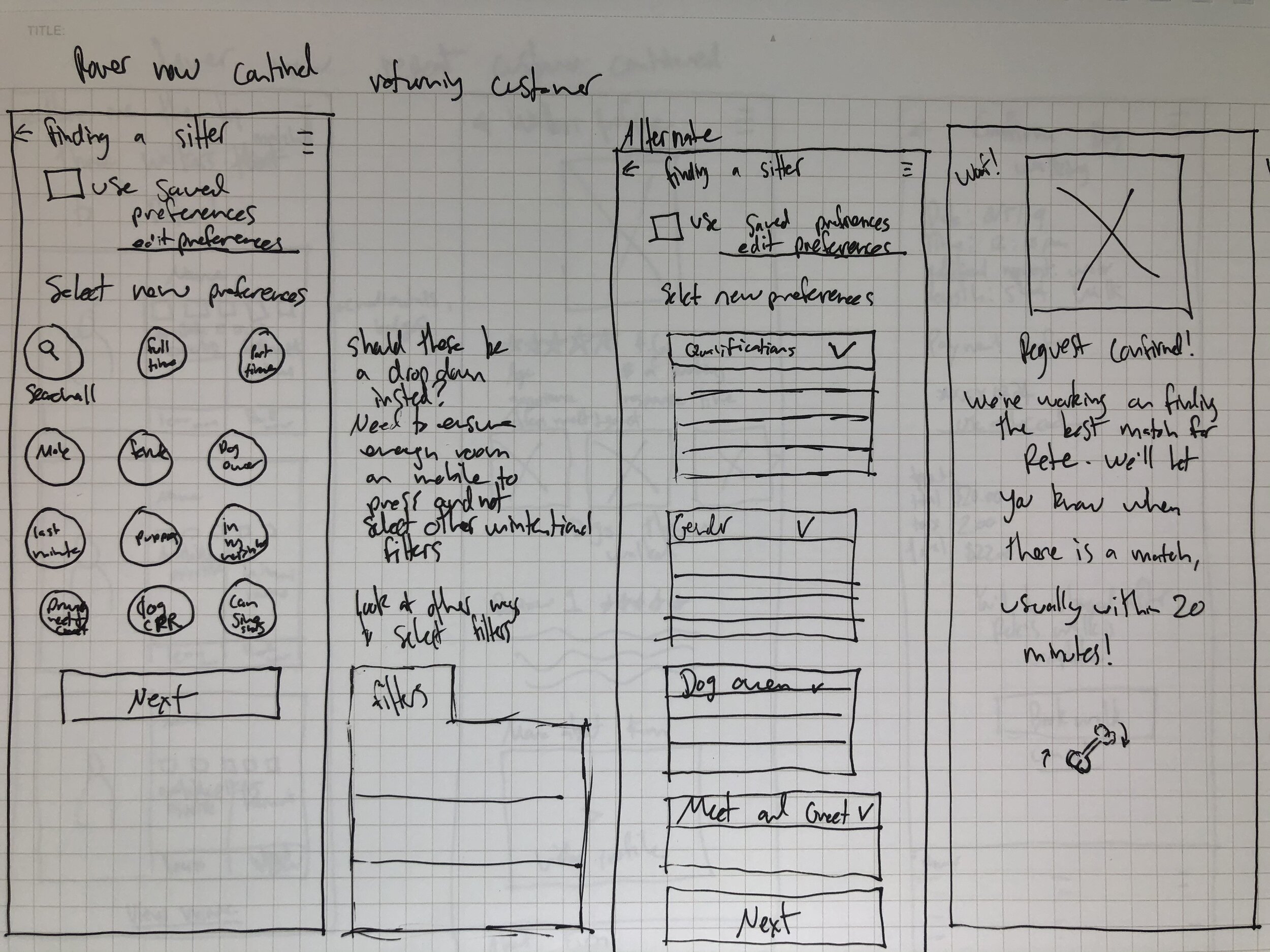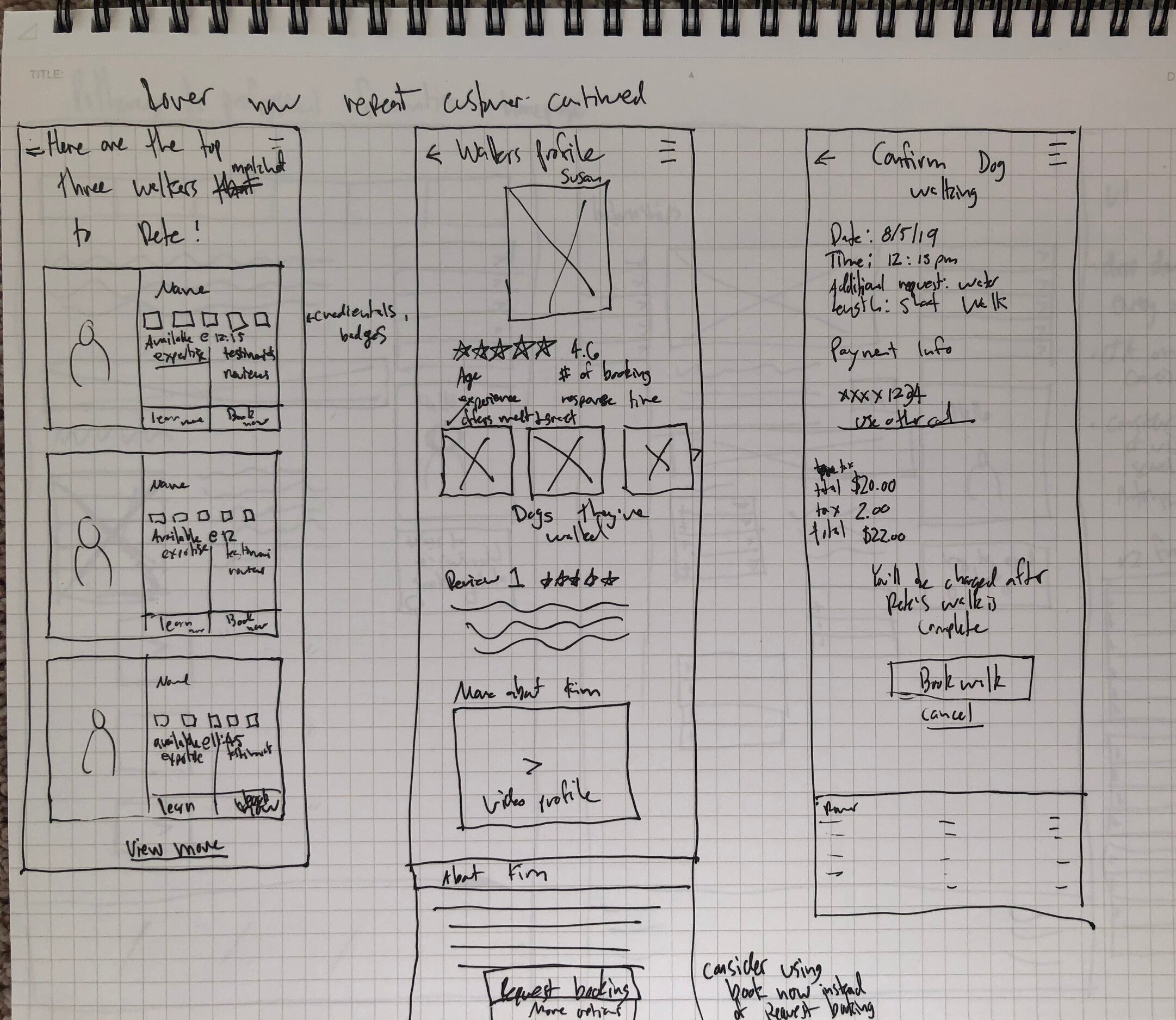Rover
UX Design and Research | iOS
rOLE
UX DESIGNER
tIMELINE
10 WEEKS
METHODS
RESEARCH AND DESIGN
PROJECT OVERVIEW
Rover connects dog owners with a network of dog providers focused on dog-walking, dog sitting, dog grooming, and a growing list of other services.
When Rover introduced on-demand dog walking as Rover Now, it simplified requesting dog services. It’s a similar business model to Uber, but with dog walkers and dogs. For dog owners who try this service, repeat behavior confirms it is well-received.
However, how do you help dog owners trust strangers they haven’t met watch their dog?
During my SVC Capstone, I worked with four designers to look at opportunities to improve trust with Rover. By the end of the 10-week project, our team designed a new experience that incorporated transparency and trust into the entire Rover Now flow.
DIGGING INTO THE RESEARCH
We focused on understanding the problem space of the dog owners, and asked ourselves:
How can we build trust to increase engagement and number of users on Rover Now?
I used generative research focusing on smaller, local companies for our competitive analysis. I had an assumption that people trust local businesses and wanted to explore how Rover could learn from them.
I found that these businesses are personable and build trust in multiple ways:
They called dogs by their name
Were located in a nearby neighborhood
Highlighted the walkers they employed
After reading hundreds of online reviews, I saw that clear policy and business reputation helped dog owners trust these establishments.
Personalization upfront
In our initial design sprint, I proposed several changes to the current Rover Now experience based on our research and allowing more personalization upfront.
By doing so, dog owners could provide information specific to their dog leading to a more personal experience and building a relationship with Rover. Owners stated their dog is part of their family, and when people ask them about their dog, they know that their dog is cared for.
This work laid the groundwork for two of our solutions, making things more personal upfront and matching dogs with the right walker for the dog’s needs.
Examples of more personalization upfront
DIGGING DEEPER INTO THE RESEARCH
I wanted to understand how people build trust with each other. I thought by understanding trust-building, these insights could be applied in conjunction with our competitive analysis.
I stumbled upon a research study done at Stanford in collaboration with Airbnb on how online reputations can negate social bias. The study helped me understand more about social bias and ways star ratings and reviews help people trust others more. Our survey results later confirmed how significant ratings and reviews are to dog owners.
BRINGING RESEARCH INSIGHTS TOGETHER
After analyzing our research and doing an affinity map, we discovered the real problem. Dog owners wanted more options and control for on-demand walking. The current experience did not provide enough information for dog owners to know if theirs or the dog’s needs would be met.
We worked collaboratively designing and ideating on solutions. This helped me see how great projects are not done in a vacuum, but building off of each other’s ideas.








VALIDATING OUR DESIGNS
We moved into a lo-fidelity design prototype to test our design solutions and then into high-fidelity.
I did a majority of the usability tests as both a low and hi-fidelity prototype and was in charge of analyzing the findings from these tests. Throughout all of our usability tests, we had a significant increase in positive feedback, and our users stating the experience did feel trustworthy.
Our focus on increasing transparency from the beginning to the end of the conversion flow.
RESULTS
During our client presentation, the client pointed out that the previous dog's walked was an interesting feature that his team hadn't considered before. I had come up with this concept based on user interviews and an emerging theme of people saying things like, "when I see someone who has a dog like mine, I feel more comfortable knowing they can walk my dog." I also saw a connection between this theme and the social bias study I had read about done at Stanford.
The recommendation would need to ensure that walkers aren't continually getting paired with the same type of dog, with other owners moving on.
I addressed this as part of the walker experience that would be flushed out with more time.
REFLECTIONS
I am proud of my team's efforts and our recommendations for a complex business and design challenge. Our client commended us for thinking about the entire experience and not small, “band-aids.”
One Rover Now user said,
I use Rover Now all the time and really loved this experience. It will be hard to go back to how it currently is after using this -Lauren V.
If Rover decides to incorporate any recommendations into the Rover Now experience, that is all further down the line. We shall see!
To see all the solutions, view my team’s slide deck











